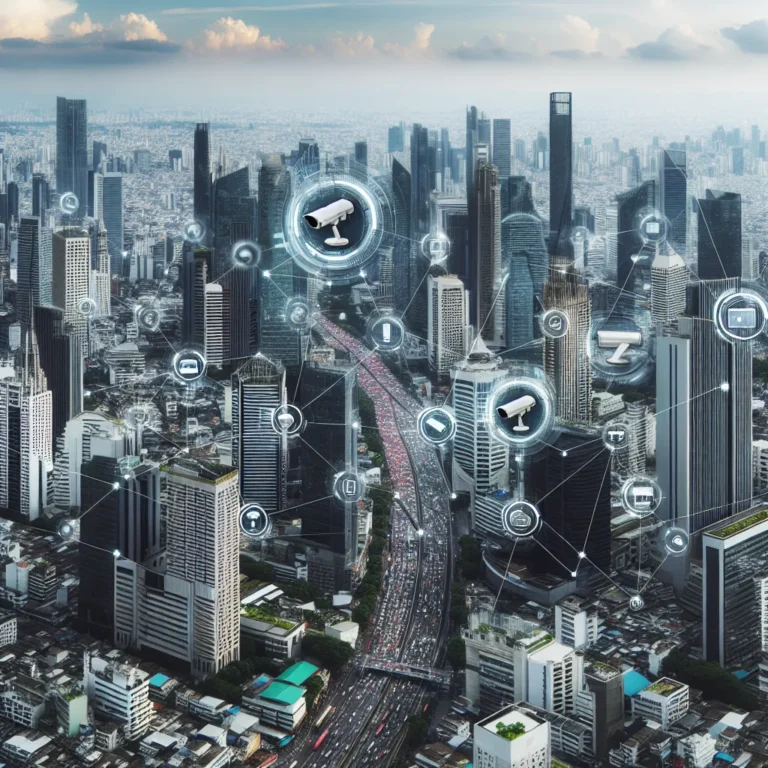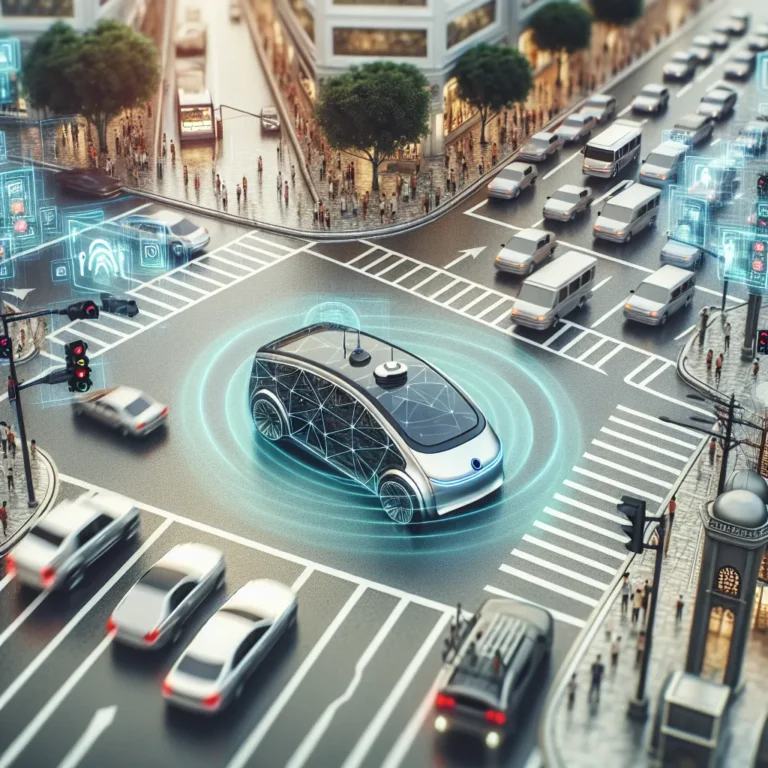
The article explores the implementation of AI-powered surveillance systems to enhance urban security, emphasizing the benefits of real-time monitoring, behavioral pattern recognition, and anomaly detection. It highlights the efficiency and proactive nature of these systems in identifying security threats and unauthorized activities, ultimately leading to quicker responses and crime prevention. Additionally, the article discusses the adaptive learning capability of AI-powered surveillance systems, reducing false alarms and optimizing security resource allocation. Another aspect is the cost-effectiveness of these systems, contributing to the creation of safer urban spaces. The second part of the article focuses on the role of IoT in revolutionizing urban security through real-time monitoring, predictive maintenance, and predictive security models, emphasizing the interconnected nature of IoT devices in facilitating a coordinated response to security incidents. Overall, the article provides a comprehensive overview of how AI and IoT are reshaping urban security, making it a compelling read for those interested in innovative solutions for safeguarding urban environments.

The article discusses the widespread application of GPS technology in wildlife monitoring, highlighting its role in tracking animal movements and behaviors with unparalleled precision. The integration of GPS technology with geographic information systems (GIS) has enabled researchers to analyze large datasets and generate detailed spatial maps, providing valuable insights for conservation decision-making. Moreover, the article underlines the non-intrusive and cost-effective nature of GPS technology in studying animals in their natural environments. Similarly, the role of remote cameras in advancing wildlife research is explored, emphasizing their ability to continuously monitor wildlife without human presence, and their contributions to informed conservation and management decisions. The article also showcases the instrumental role of remote cameras in detecting rare species, monitoring wildlife responses to environmental changes, and raising public awareness about biodiversity conservation. Overall, the article provides a comprehensive overview of the innovative techniques revolutionizing wildlife monitoring and research, making it a must-read for anyone interested in the intersection of technology and wildlife conservation.

The article explores the pivotal role of advancements in sensing technologies in driving the development of autonomous vehicles. It highlights the significant progress in LiDAR, radar, and camera systems, which provide essential data for perceiving and interpreting the vehicle's surroundings. The integration of advanced sensor fusion algorithms has further improved the overall perception capabilities of autonomous vehicles, enhancing their ability to navigate urban environments and challenging road conditions. Additionally, the growing focus on the development of solid-state LiDAR promises to further improve the reliability and scalability of sensing technologies for autonomous vehicles. Overall, the continuous innovation in sensing technologies is bringing us closer to a future where safe and efficient self-driving vehicles are a reality, making the article a compelling read for those interested in the latest advancements in autonomous driving technology.

The article "Innovative Sensing Solutions for Environmental Monitoring" highlights the crucial role of advanced sensing technologies in environmental monitoring. It discusses the impact of miniaturized sensor technologies, remote sensing techniques, and data analytics systems in providing real-time data collection for environmental assessments. The integration of these innovative sensing solutions offers comprehensive insights into environmental changes and enables timely interventions, making a significant leap in our ability to protect the environment. Furthermore, the article "Advancements in Environmental Sensing Technologies" emphasizes how these solutions have revolutionized environmental monitoring by gathering real-time data on various parameters and enhancing accuracy and efficiency. It also discusses the development of cost-effective sensor devices, the integration of IoT principles, and the use of cloud computing and big data analytics in processing vast amounts of environmental data. The comprehensive coverage and real-time insights provided by these technologies make them a valuable asset for understanding and protecting the environment.

In today's competitive business environment, the pivotal role of data analysis in enhancing business strategy cannot be overstated. By leveraging data analysis, businesses gain crucial insights into emerging trends, customer preferences, and market opportunities, essential for crafting adaptive business strategies. Moreover, effective data analysis allows businesses to tailor products and services, optimize resource allocation, and make data-driven adjustments to their overall business strategy. Harnessing the power of advanced analytics tools and technologies enables businesses to anticipate market shifts, capitalize on emerging opportunities, and mitigate potential risks, driving informed decision-making. The strategic importance of leveraging data analysis for informed decision-making cannot be overlooked, as it provides actionable insights and empowers businesses to navigate through complex and competitive landscapes.





